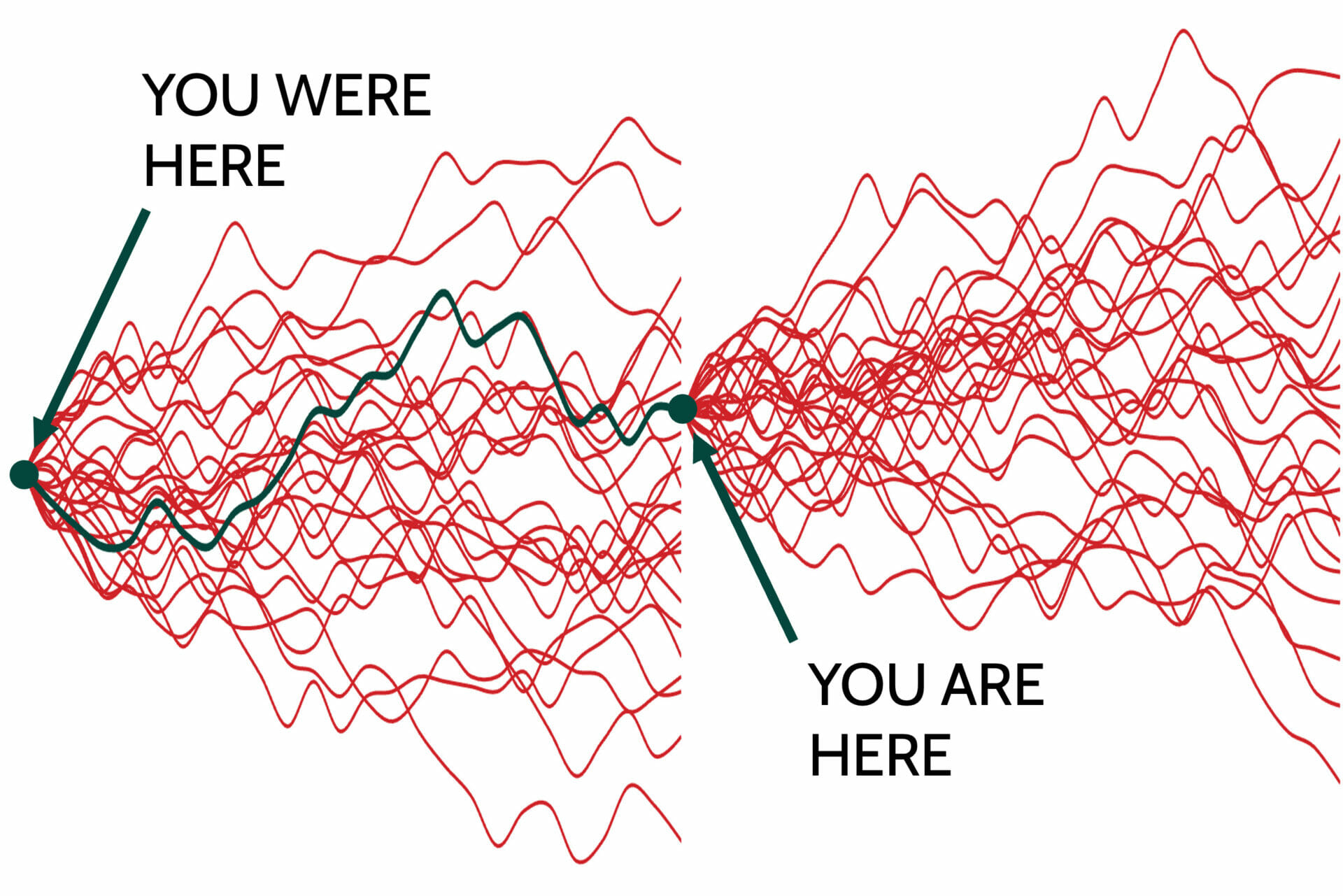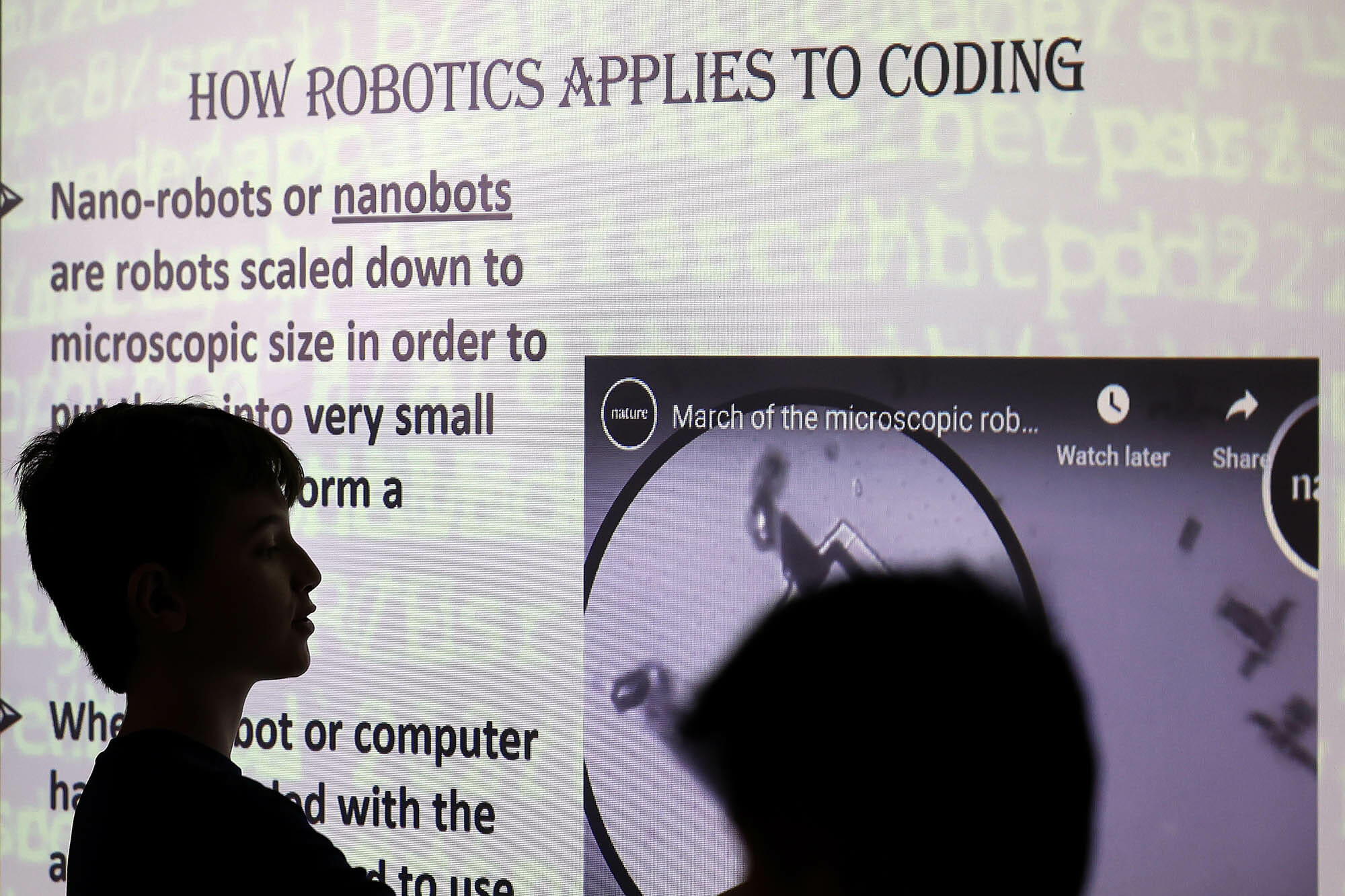This past Monday, our Upper School students, faculty, and staff had the privilege of attending a presentation by Dr. Aaron Titus, a professor in the Department of Physics at North Carolina State University who traveled to MICDS to deliver the 2023 Harbison Lecture. Dr. Titus, a veteran educator and co-creator of the widely-used online learning platform WebAssign, focused his remarks on the “adjacent possible,” a term that describes the set of available subsequent options at any given point in an evolving process. Along with everyone else who witnessed Dr. Titus leaping joyfully from polar magnetic models to Slinky demonstrations to coding advice, I was fascinated by his argument.
To illustrate the adjacent possible, Dr. Titus projected a set of hypothetical paths of which only one is chosen, followed by a second set of paths extending from the end of the selected first path. This succession, he observed, describes any process with variable outcomes, and is a healthy framework for understanding growth through trial and error. At any given time, a work in progress—and we are all works in progress—must choose one of many, even myriad ways forward, and often our choice is the wrong choice. So be it. Through the lens of the adjacent possible, “if at first you don’t succeed, try, try again” becomes “if at first you don’t succeed, try, try anew.” Going back is never an option, but going forward much the wiser—and much the more confident—always is.
Robert Frost’s poem The Road Not Taken is more famous than it is well understood. Asked to quote any part of it from memory, most of us would likely offer its ending: “I took the [road] less traveled by, / And that has made all the difference.” (As I was typing out these lines, Google even offered to finish them for me.) We want a poem about the costs of regret to be a poem about the rewards of perseverance; but Frost’s narrator, upon discovering two roads diverging “in a yellow wood,” is in fact “sorry” he cannot “travel both / And be one traveler,” and later tells his story “with a sigh,” knowing that the road he did not choose was actually “just as fair” and had “perhaps the better claim” than the one he took. He is not boasting that he made the right choice; he is wondering whether he made the wrong one.
The adjacent possible splits the difference—perseverance without regret. I decided to recreate Dr. Titus’ illustration by way of Robert Frost, and though I failed several times in the undertaking, I “tried, tried anew” and ultimately found a mathematical solution, ever more confident with each failure that success lay in the adjacent possible.

I have had less time than I would have liked today to pen this letter. If its message is not as clear as it could be, please forgive me. “Hope springs eternal” is the gist of it. Many thanks to Lorie Damon, mother of sophomore Zach, for sharing this New York Times essay with me this morning and inspiring my connection of mathematics and literature here—for revealing an adjacent possible narrative path.
Always reason, always compassion, always courage. Whether you are celebrating Easter or Passover, observing Ramadan, or simply enjoying a beautiful weekend, my very best wishes to you and your families until our next week together begins.
Jay Rainey
Head of School
This week’s addition to the “Refrains for Rams” playlist: A Shot in the Arm by Wilco (Apple Music / Spotify). “What you once were isn’t what you want to be anymore.”
